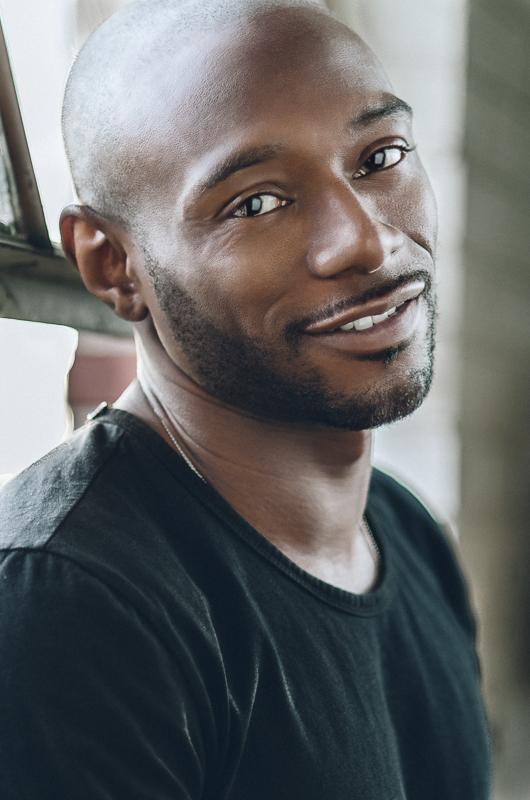December 7, 2012
Kenneth T. Jones, PhD, MSW
- Year of graduation and concentration: 1999; BA, Sociology
- First job: Director of Research, Policy Institute, National Gay and Lesbian Task Force
- Current job: Behavioral Scientist, Division of HIV/AIDS Prevention, Centers for Disease Control and Prevention (Transferring to the Office of Health Equity, Veterans Health Administration on 12/30/2012)
Note: The views and perspectives in this article are those of Dr. Jones and do not necessarily represent the views of his current or future employers.
Advice to current UM students
My times in New York City after undergrad marked a turning point. I exposed and embellished myself in our nation’s fashion capital. I dabbled as a make-up artist with a few tear sheets to my credit. I even had great relationships, some intimate, with notable industry types including make-up artist, wardrobe stylists, and photographers. I contributed my thoughts on fashion magazine layouts and other editorial decisions. These moments and individuals have each left me with the same enduring impression and it’s captured in something I tell myself daily: Life’s an editorial. You never know when you’ll be shot.
In other words, our actions either alone or in concert with others and the objects around us tell a story. This story is captured at a minimum in our own remembrance but also in the minds of others. Therefore, take some time to size up your surroundings; consider the consequences of your actions and others; be deliberate in those actions that you can control; and own the ultimate outcome. Even the most novice model soon learns to take note of the “natural light” and understands how it shapes his or her facial features with the slightest adjustment.
Now this isn’t risk-adverse or even risk-neutral advice. My prized life moments have been captured in symbolic editorials loosely titled, “I no longer give a ____!”
Biggest challenge you have faced in the workforce
I learned the importance of advocacy as a campus leader at the University of Michigan. I’ve been fortunate to work nationally on behalf of racial and ethnic minorities; lesbian, gay, bisexual, and transgender individuals; and concerns related to health equity. I now describe myself as a professional advocate. The biggest challenge I have faced in the workforce as a professional advocate is reconciling professional advocacy with the goals of the institution. I’ve learned that even in the well-meaning institutions where I have worked that an institution largely serves to protect itself. Unfortunately, and oftentimes, program directions and funding decision are often predicated on political expediency and with those occupying the social bully pulpit.
Discovering the best way to advocate for change that is seemingly in line with the stated mission, vision, and values of the institution has been essential. I recently found what I believe to be a solution in my favorite quote by Khalil Gibran, Lebanese-American author. He remarks, “If indeed you must be candid, be candid beautifully; otherwise keep silent, for there is a man in our neighborhood who is dying.” As a professional advocate, I’m now learning the importance of being “candid beautifully.” Fortunately, beauty is subjective.
What do you think, based on your different experiences in the health field, are the biggest misconceptions about HIV/AIDS?:
A misconception articulated in many health circles, and even in society generally, is that those mostly burdened by HIV/AIDS no longer view it as the threat it once was. In the United States for example, gay and bisexual men continue to be hardest hit by HIV/AIDS. Black and young gay and bisexual men drive domestic rates of HIV. Arguably, some gay and bisexual men, regardless of race, do not see themselves at risk for contracting HIV despite engaging in unprotected anal sex, the primary mode of HIV transmission among us. However, many individuals are shocked to learn that Black gay men often report less sexual risk than other racial groups but remain grossly and disproportionately infected.
Unfortunately, Black gay men have a higher probability of having a sexual partner with a viral load that is likely to increase his chances of becoming HIV-infected. This is likely by virtue of the high concentrations of HIV in the communities where we live and socialize, and our selection of sexual partners—often other black men. According to presenters at the 2012 International AIDS Conference, Black gay men would only have to engage in unprotected anal sex with 2 male partners, compared to 6 male partners for white gay men, for both groups of men to have the same likelihood of HIV transmission occurring.
Clearly, preventing HIV is larger than a misconception about the threat of HIV. The data consistently evidences a historic fact: health inequities persist among the less privileged and more marginalized individuals in our society. If anything, a major misconception is that we’ll see an end of HIV/AIDS by focusing on individual behaviors and beliefs. The key is to prioritize strategies that reduce social and structural barriers that spur these and other disparities.
Contact
If you would like to contact Dr. Jones with any questions, he can be reached through the following:
- Email: [email protected]
- Twitter: @drktjones
- Facebook: http://www.facebook.com/drktjones
- LinkedIn: http://www.linkedin.com/in/kennetht76

